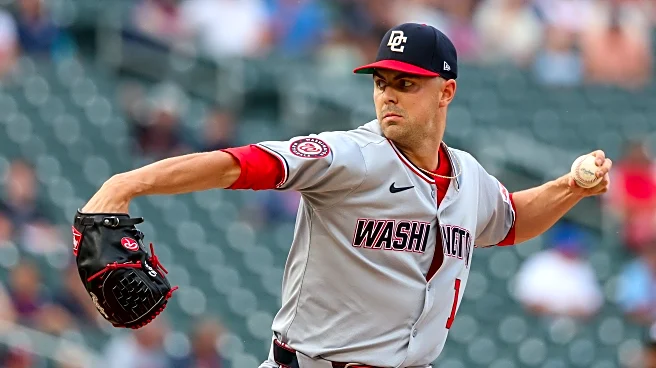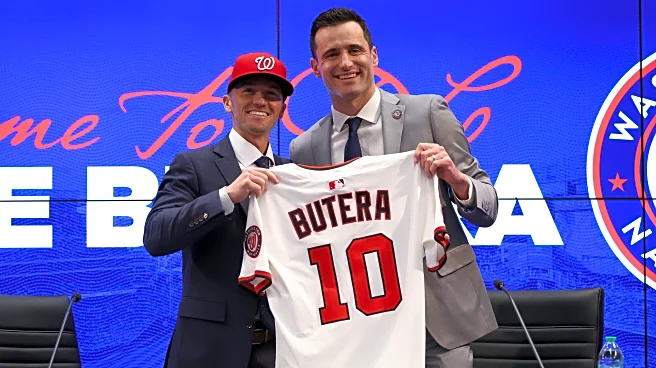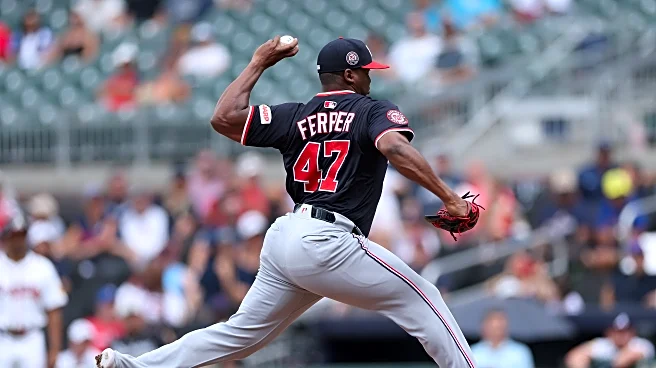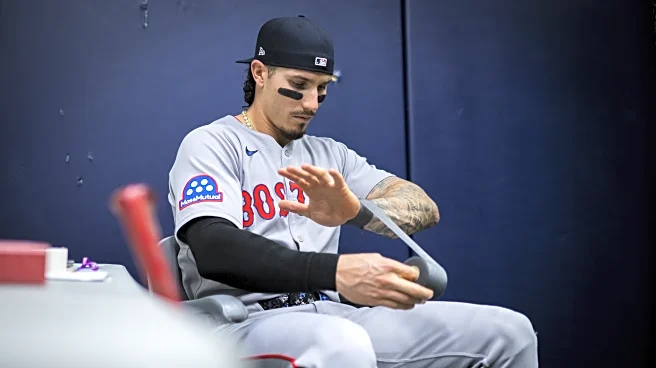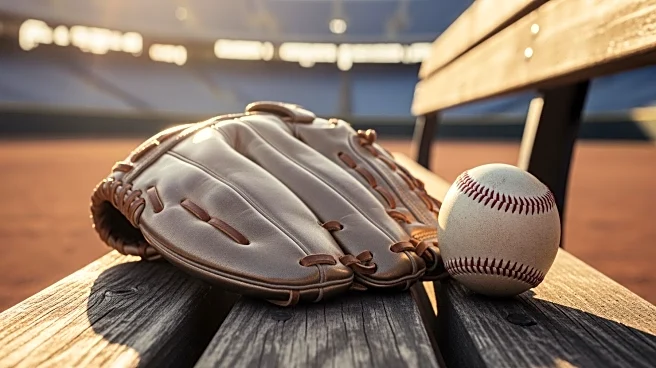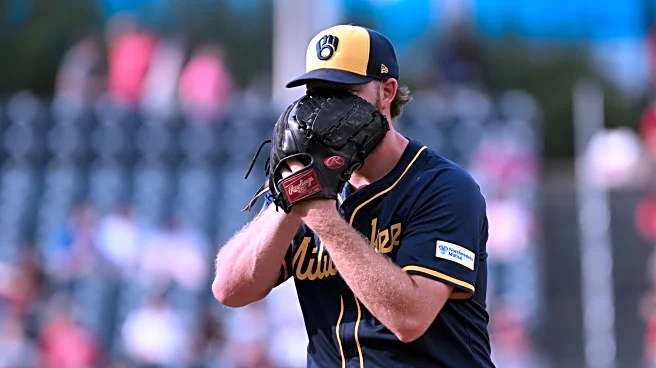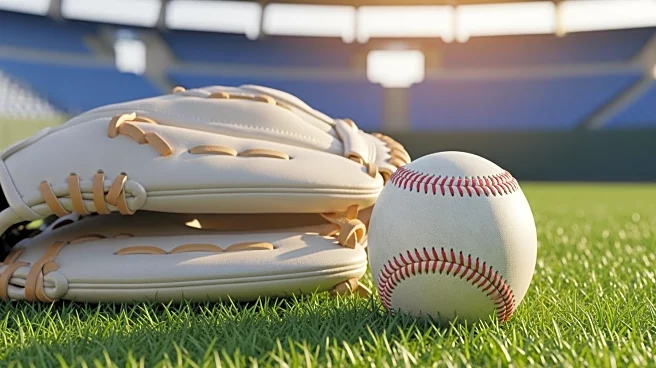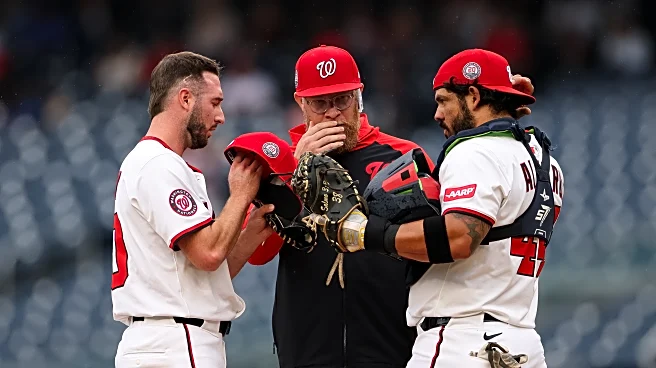Welcome to the 2025-26 edition of Smash or Pass, in which we take a look at potential free agent and trade targets and determine whether the Red Sox should pursue them and, if so, what it would take to land them. Today we start our series by searching for the elusive “number 2” to pair with Garrett Crochet.
Who is he and where does he come from?
He’s left-handed pitcher MacKenzie Gore, currently of the Washington Nationals. He was drafted by the San Diego Padres and traded as part of the deal that sent Juan Soto from Washington to San Diego.
As an aside, isn’t it crazy that Juan Soto was traded twice? How do you have that guy on your team and decide you would rather have someone who isn’t him on your team instead? Anyway, Gore comes from the trade block. I don’t know where the trade block is geographically located, but I’d imagine it’s near the waiver wire and the transfer portal.
Is he any good?
Gore’s 159.2 innings were just shy of qualifying for leaderboards, but his 10.4 K/9 mark would have placed him fourth in baseball. That’s good! His 3.6 BB/9 mark would have placed him seventh in baseball. That’s not good! Walks have been part of Gore’s game for each of his four seasons in the big leagues, which could be a concern, but it’s in part by design. Gore is what I would call a “nibbler”, especially against right-handed hitters. He throws his fastball in the zone frequently, but none of his secondary pitches land in the zone against righties more than 40% of the time. It led to him walking 9.9% of righties, along with a .259 batting average. His changeup was excellent at inducing whiffs with a 20.8% swinging strike rate, but it was only in the zone about 25% of the time. His curveball performed well at times, but also wasn’t in the zone enough to carry his arsenal against righties.
While there are reasons to like Gore against righties, namely his changeup, he needs another pitch to throw for strikes. If the Red Sox were to acquire the lefty, they might look to increase his cutter usage. As is, he used the pitch 6% of the time against righties, but it was primarily a two-strike offering thrown to the back foot. The movement profile might not have enough lift to live up and in, but he could try throwing it to the back door for called strikes.
Against lefties, Gore is better. He uses a fastball and slider, mixing in his curveball sparingly as well. His fastball returns decent swing-and-miss numbers, but was hit hard at times. The shape allows him to miss in the zone some, but if he can command the ball to the top of the zone consistently, he’ll be even more successful at limiting hard contact. The slider was dominant, living low and glove-side for a 21.8% swinging strike rate. Lefties hit .235 against Gore, and there’s no reason to believe he’ll take a step back in that department.
TL;DR, just give me his 2025 stats.
30 G, 159.1 IP, 152 H, 64 BB, 185 K, 20 HR, 4.17 ERA, 27.2% K%, 9.8% BB%
Why would he be a good fit for the Red Sox?
When Andrew Bailey was hired as pitching coach, one area that was emphasized was the ability to win in the strike zone. The best pitch you can throw is a strike. If you can throw pitches in the zone, and hitters still can’t hit them, you’ll likely do pretty well. In 2025, outside of Garrett Crochet (and later Connelly Early), the Red Sox seriously lacked in this department. Lucas Giolito’s 10.6% mark ranked third among Red Sox starters, and 143/260 among starters with at least 100 pitches thrown in the zone.
Gore’s in-zone swinging strike rate was 14.1% in 2025, 35th among qualifiers, and two spots behind Crochet. He was able to generate whiffs in the zone with his changeup, slider, and, to a lesser extent, his fastball. He also exhibits traits that Craig Breslow has targeted during his time as Red Sox Chief Baseball Officer. Gore’s fastball is hard and flat. He also exhibits almost seven feet of extension, placing him in the 86th percentile in that category. The Red Sox want a number two starter, and Gore’s ability to strike hitters out, playing off a fastball, gives him the chance to be that pitcher.
Why won’t he be a good fit for the Red Sox?
When Gore was in high school, he wore number one because he was the smallest player on his team. They won the state championship, and he stuck with the number. If the Red Sox traded for Gore, he’d have to find a new number. The number 11 is available. Gore would be a nice consolation prize for all of those people who bought Rafael Devers jerseys in May 2025.
Fan apparel reclamation aside, the Red Sox want a pitcher to pair with Crochet, and it’s not clear that Gore has the length to be that guy. Gore has excellent stuff that keeps the ball out of play a lot, and as a result, he doesn’t work deep into games. Over 30 starts, he recorded outs in the seventh inning just twice. He completed six innings exactly 14 times, which is great, but you’d like to see your second starter get through seven or eight innings now and then. It’s not the biggest deal in the world, especially with the Red Sox’s pitching depth, but innings are important over 162 games.
What would he cost?
Gore is under contract through 2027. MLBTradeRumors estimates he’ll make $4.7 million in arbitration for the coming season, which isn’t a huge price tag. Assuming he pitches well in 2026, he’ll get a nice bump in his final year of control, but it won’t be a number that will make your eyes pop out of your head. As far as trade compensation goes, I’m not the guy to ask about specifics. Former Red Sox Assistant GM Paul Toboni took over as head of the Nationals’ baseball operations department and took other front office members with him. He’s incredibly familiar with the Red Sox system, which should help facilitate trade conversations.
Show me a cool highlight.
How about striking out 13 on opening day? That’s pretty cool.
Smash or Pass?
I usually come away from these with pretty strong opinions. With Gore, I’m torn, which tells me he probably isn’t the guy I want as the Red Sox’s number two starter. At the same time, the rotation lacks swing-and-miss stuff behind Crochet, and Gore has that. He’s kind of in the Blake Snell mold, where he’ll be frustrating to watch, but work his way out of jams, and that works. I guess I’ll say smash, with the caveat that there are other pitchers I’d prefer over Gore.
